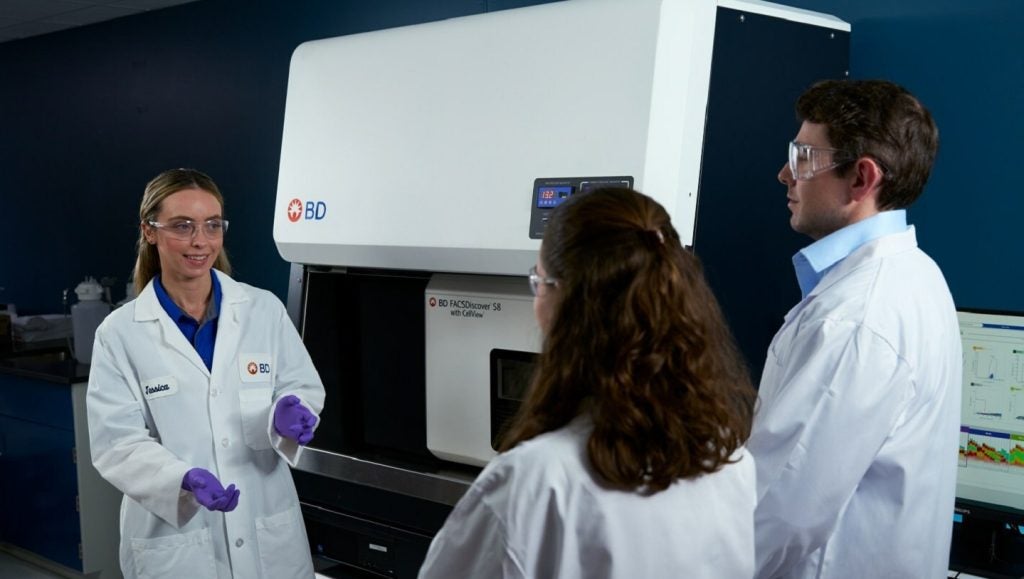
On 9 September 2009 the press was abuzz – the biggest aesthetic laser and energy device company in Europe, Japan and the US was about to be born. By combining the technical innovation of Israel’s Syneron, a radiofrequency and laser device maker and aesthetic medical product producer Candela in the US, the face of the cosmetic device industry was going to be changed forever.
The two companies were simply following the way direction the industry has been headed toward for some time, according to analysts at GlobalData. Mergers and acquisitions have been expected for the industry since the global economic decline started late in 2008.
Aesthetic and laser surgery suffered a blow as a result of the economic downturn, with consumers cutting back on hair removal and cosmetic procedures, and the aesthetic industry, in turn, suffered a blow. Merging to drive efficiency has seemed an obvious way to survive, and to build monopolies for when the market swings back to more positive times.
It makes sense for companies to want to hold on. The global market for aesthetic laser and energy devices was valued at $1.02bn in 2008 and is forecast to reach $1.79bn in 2015 with an annual growth rate of 8%.
Syneron and Candela are just two companies that recognised where their obvious synergies lie. By merging their companies, they can not only reduce their staff outlay but improve on operational efficiency, according to GlobalData. Syneron has about 300 employees and Candela 405 – this number is set to be drastically reduced as a result of the takeover, in return improving the company’s bottom line. It will also improve its financial strength, according to Syneron CEO Louis P Scafuri.
“Today’s business climate and the needs of aesthetic providers require an aesthetic technology company to be even more market-responsive than ever before,” Scafuri said. “This merger will create that company.”
How well do you really know your competitors?
Access the most comprehensive Company Profiles on the market, powered by GlobalData. Save hours of research. Gain competitive edge.

Thank you!
Your download email will arrive shortly
Not ready to buy yet? Download a free sample
We are confident about the unique quality of our Company Profiles. However, we want you to make the most beneficial decision for your business, so we offer a free sample that you can download by submitting the below form
By GlobalDataScafuri says that by using the IP and product line of both companies, the combined company, which will sit over the top of both divisions, will be able to offer the broadest product portfolio in the industry as well as increase its global footprint and drive innovation – not bad for having fewer staff and less overall cost. Once the agreement is finalised at the end of 2009, the company is likely to have more than $240m in its pocket – and no debt. It is forecast to generate annual revenue of more than $180m based on the quarter ended 30 June 2009.
“The combination of Syneron and Candela will create a leading medical aesthetic device company, with the significant financial strength to continue to deliver innovative solutions and exceptional support,” Scafuri said.
From humble beginnings
Syneron Medical has been strongly focused on innovation since its inception. The determination of Dr Michael Kreindel, who was researching the limitations of intense pulse light and conventional laser systems for use in medical aesthetics, eventually came up with elōs (Electro-optical Synergy) – a technology platform that now powers all of Syneron’s medical aesthetics systems.
In 2000, Syneron was founded and five product families launched. Now the company is one of the largest of its type in the world, focusing on wrinkle reduction, hair removal and the rejuvenation of skin appearance through the treatment of superficial benign vascular and pigmented lesions among other things.
Candela Corporation started its operations much earlier. In 1970 it started developing new technologies for light-based aesthetic therapies for use by physicians and personal care therapists. Since then, its innovations have shaped the industry.
Candela produced the first vascular lesion treatment laser for use on children, the first Q-switched alexandrite laser for pigmented lesions and tattoos and the first dynamic cooling device for epidermal protection. More recently it created the Serenity device, which features its Pneumatic Skin Flattening technology to reduce pain during laser light-based treatments.
Candela has about 11 subsidiaries operating in the US, Germany, France, Spain, Portugal, Italy, Japan, Australia and the UK.
The company is headquartered in Massachusetts, US and in April 2009 it received registration approval from the Chinese State Food and Drug Administration to market the full line of V beam lasers in the People’s Republic of China.
Syneron, meanwhile, has a presence across North America, Europe, the Asia Pacific region, Israel and others. The company’s headquarters are in Yokneam Illit, Israel.
Meeting the future head on
The global aesthetic laser and energy devices market is a highly competitive arena, and on their own, Syneron and Candela are up against other large players such as Cynosure, Lumenis, Palomar Medical and Cutera. All of these companies are helping to pave the way for future players in the market, driving improved standards of safety and effectiveness of the procedures and expanding the non-core physician base of end users. They are also reaching savvy consumers in a more direct manner – all of this ensures that market competition will become more populated, and more aggressive in future.
What Syneron and Candela have effectively done by merging (Syneron will spend $65m on the deal for stock), is place themselves in a position where they can benefit from this new competition by having the funds to buy up small-cap and mid-cap companies.
Candela and Syneron will continue to trade under their names. Candela will remain in Wayland MA and will operate as a wholly owned subsidiary of Syneron, which will maintain its corporate headquarters in Israel and North American. Candela’s subsidiaries will also stay the same. Even the chiefs at the helm will remain – Scafuri for Syneron and Gerard E Puorro as CEO of Candela.
What will change will be the production line, and everything beyond the façade. Management will sit across both companies and a more aggressive view will be taken of not only the company but the market.
The global recession may have brought about tough times for some players in the medical device market, especially in areas dealing with cosmetic procedures where the consumer has so much pull. But at the end of the day, for companies like Syneron and Candala, it has spurred a new future that once again, will change the outlook of the industry and those dealing within.







